Even if we left behind the trappings of kings and queens almost two hundred and fifty years ago, the modern American is no stranger to the glamor of the monarchy. The marriage of Prince William and Kate in 2011 was viewed by tens of millions across the world, U.S. viewership accounting for roughly 22.8 million all on its own. Queen Elizabeth II, who reigned for seventy years as the only queen most of us knew by name, passed in 2022. In 2026, The King’s Gallery at Buckingham Palace will present Queen Elizabeth II: Her Life in Style, displaying a magnificent collection of her majesty’s iconic fashion.
In the 16th century, glamour played just as large a role in the public fascination and opinion of its ruling monarch. From public appearances to court portraiture, Queen Elizabeth 1st knew a thing or two about controlling her image and how she was perceived by both her admirers and her adversary. Jewelry was a surprisingly large contributor to her political craft, as well as a rare insight into her personal thoughts and feelings. She used her jewelry to convey wealth, power, and influence when necessary, or she could choose to show piety and purity through a small change in a necklace.
Chequers Ring
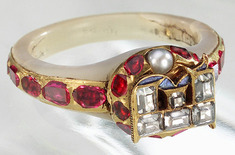
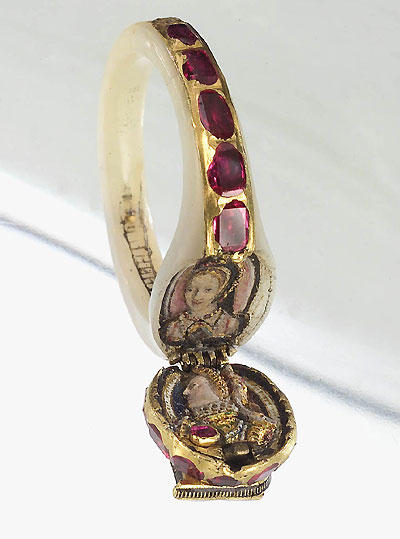
One of the few surviving pieces of Queen Elizabeth 1st’s jewelry, this stunning ring is carved from mother-of-pearl, inlaid with a gold band and table-cut rubies. White diamonds on the top are used for the E, and cobalt blue for the R (Elizabeth Regina, respectively). The ring opens into a locket, revealing portraits of Elizabeth herself, along with her mother, Anne Boleyn. The ring is believed to have been a gift from Robert Dudely, the queen’s long-standing paramour.
Along with the beauty of the ring itself, the selection of her mother’s portrait represents an unusual perspective on Queen Elizabeth’s relationship with a woman who was killed when she was still a toddler. After Henry VIII’s relationship with Anne Boleyn soured, her summary execution left little Elizabeth in a perilous position. Any show of sympathy or displaying mementos of the beheaded queen would have been social suicide, and few things are a larger reminder than a child. However, she was still noble, although of significantly lesser standing. Elizabeth had to learn early how best to carry herself and to behave in a manner that would please her father.
She would do the same while in her half-brother, Edward VI’s household, and yet again when her elder half-sister Queen Mary I, daughter of Catherine of Aragon, took the throne. Mary was, by all accounts, not kindly disposed toward Elizabeth. As this was the child of the woman who caused her mother to be divorced and cast aside, separated from her for twenty-seven years. Elizabeth had to be clever to avoid suspicion.
Even when Mary eventually died, Elizabeth was careful to emphasize her relationship to her father over her mother. She is said to have rarely mentioned the woman, as the execution of Anne Boleyn was a scandal and a threat to Elizabeth’s legitimacy. This makes the intimacy of such a ring, which she wore until the day she died, seem contrary. A private respect for a mother she was not allowed to know? An acknowledgment of where she came from and the cost of failure? Or just a simple moment, daughter to mother, more complex and private than we could ever understand.
The Pearl Necklace
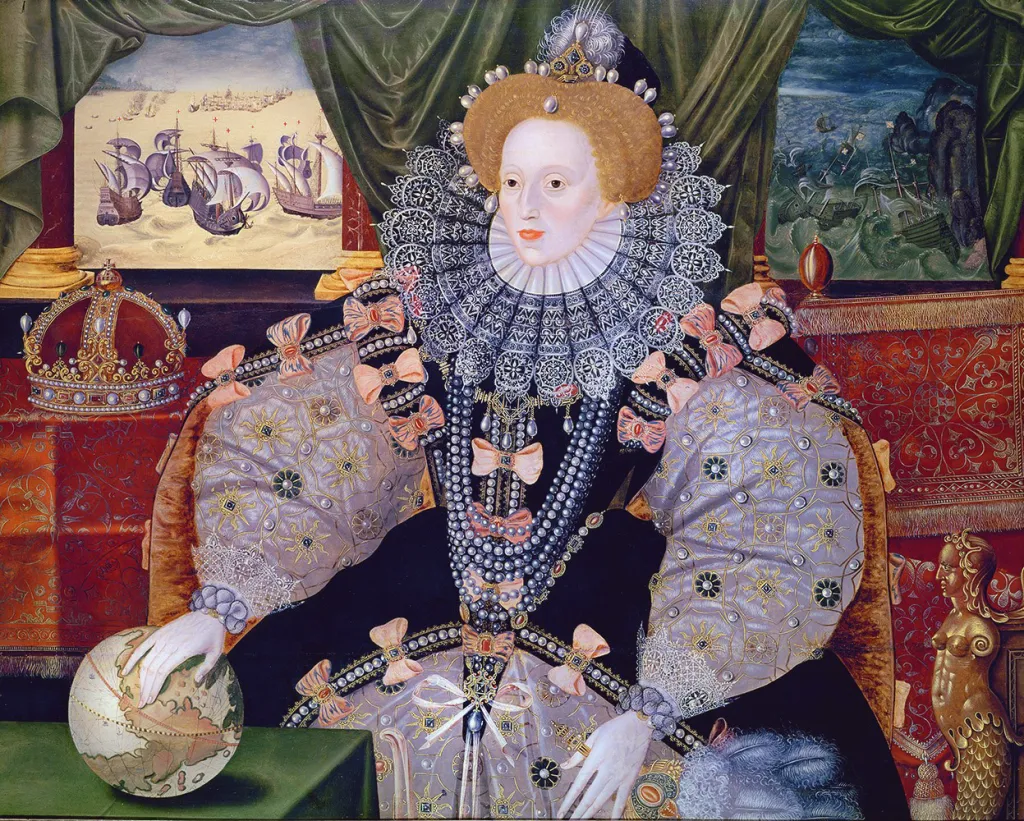
Pearls could be said to encompass all that Queen Elizabeth wanted her people to believe about her. These shimmering drops of moonlight were said to symbolize purity, femininity, and virginity. Elizabeth wore them extensively; her court gowns were positively covered in pearls, which had to be painstakingly removed and sewn back on whenever the gowns had to be cleaned. Many of her portraits contain ropes upon ropes of pearls sewn into her garments, fixed in her crown, decorating her hair, and strung around her throat.
However, there is an amusing little story behind the fantastic six-strand pearl necklace shown in the Armada portrait displayed here. These black pearls originally belonged to Queen Catherine de’Medici of France, who received them from her uncle, Pope Clement VII. When Mary, Queen of Scot’s married Catherine’s son, Francis II, the queen gifted the pearls to her new daughter-in-law.
Of course, those of us with a basic knowledge of history know what fate awaited poor Mary, but before she fled Scotland, she entrusted her jewelry collection to her son Regent, the Earl of Moray. He, in due course, made it known that he was going to sell them off. Among the interested parties were two determined royals: Catherine de’Medici and Queen Elizabeth 1st. Elizabeth turned out to be the victor, purchasing the magnificent strands for 1/3rd of their original value. Though she did say she would wear the pearls in honor of her beloved cousin (who she had executed) for the rest of her life.
Some of those pearls still exist in the Imperial State Crown, but most were separated and either sold or given as gifts after Elizabeth’s death in 1603.
Pelican Necklace
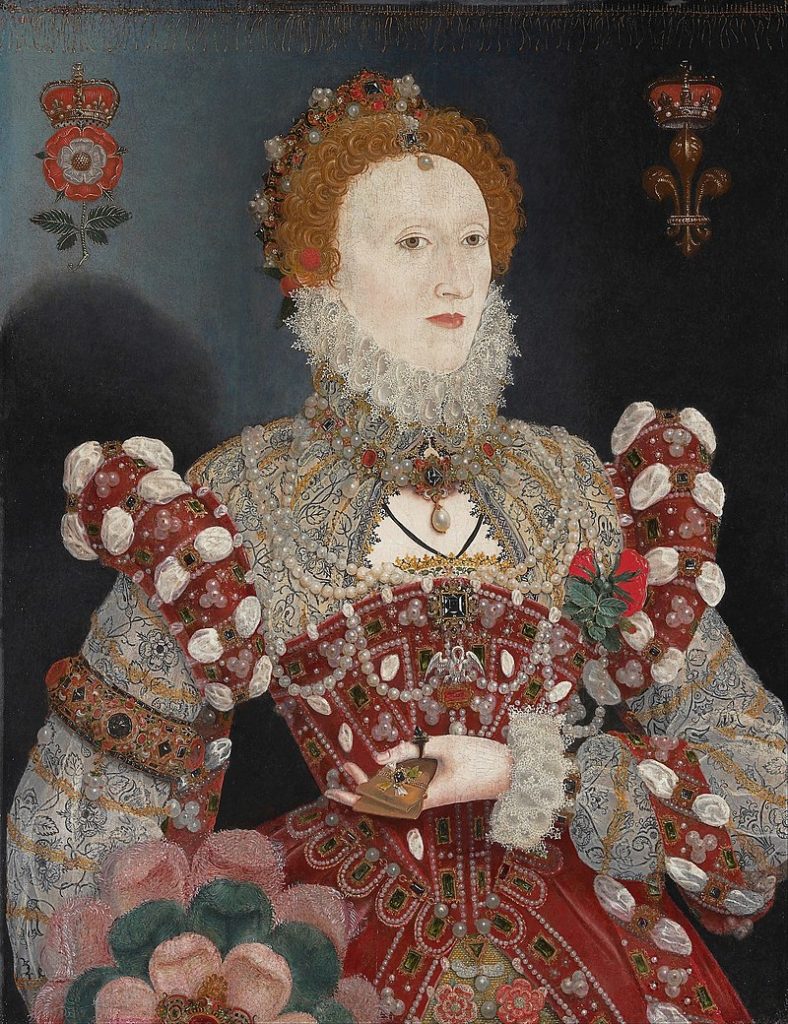
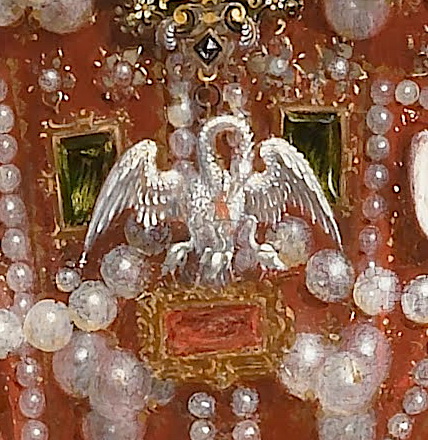
In 1574, John Astley, the Master and Treasurer of the Jewel House, began his inventory. Elizabeth’s modest hoard included many items that had been inherited or given to her throughout her illustrious reign:
– a salt cellar decorated with precious stones and pearls depicting five Morris dancers, a drummer, and a lady
– a silver gilt jug shaped like an owl
– an orange strainer made of silver with crystals in the handles
– a multitude of silver and gold gilt bowls, glasses, plates, trenchers, serving platters, and other household items
– four gold toothpicks
– crystal chessboard with topaz and crystal pieces
– a unicorn horn cup set with diamonds and pearls, banded with gold
Gifts to royalty were quite common, especially for those who were well-loved by their people and respected by their allies. Elizabeth had some six hundred and twenty-eight pieces of jewelry in her private collection. Along with pearls, many gave Elizabeth gifts of pelican brooches and necklaces. At the time, pelicans were thought to feed their chicks with their own blood, pecking at their breast to ensure the next generation’s strength. This alluded to Elizabeth as a self-sacrificing and pious mother to England, which she was in many ways.
In the Pelican Portrait, a silver pendant hangs from a chain about her neck, depicting a mother pelican, her head bowed to feed her offspring as her wings expand to offer shelter and protection. It stands over a massive gold-framed ruby. This motif, Pelican in her Piety, will be repeated over and over again throughout the centuries as a popular jewelry piece for royalty.
Elizabeth’s Jewelry in Portrait
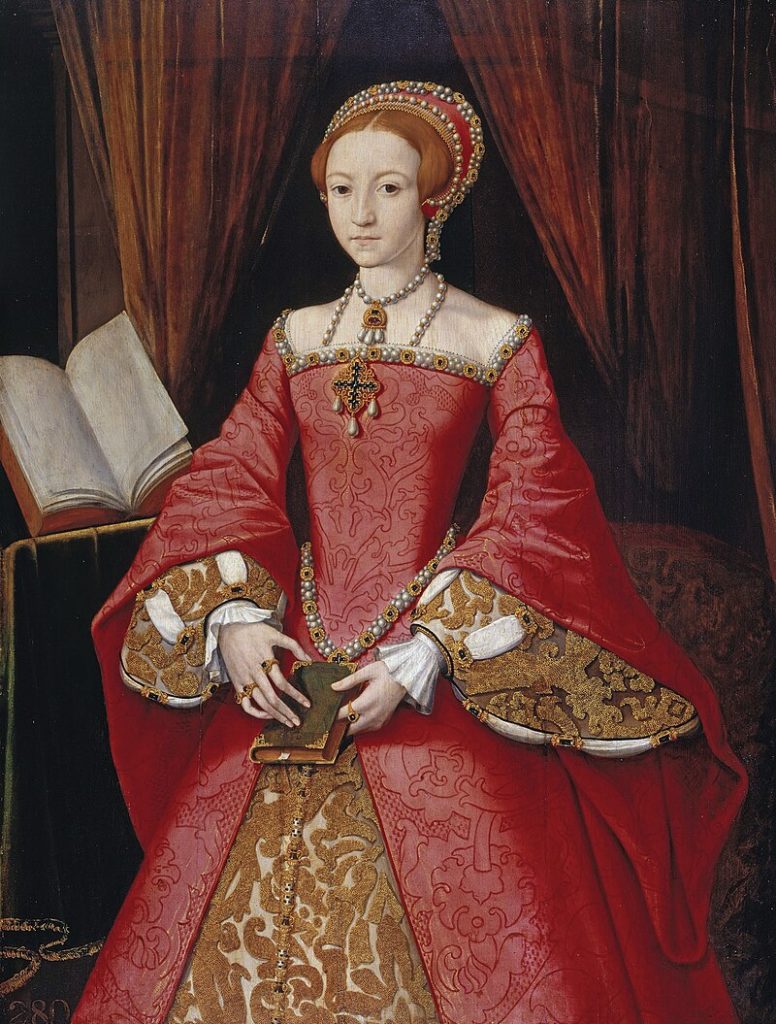
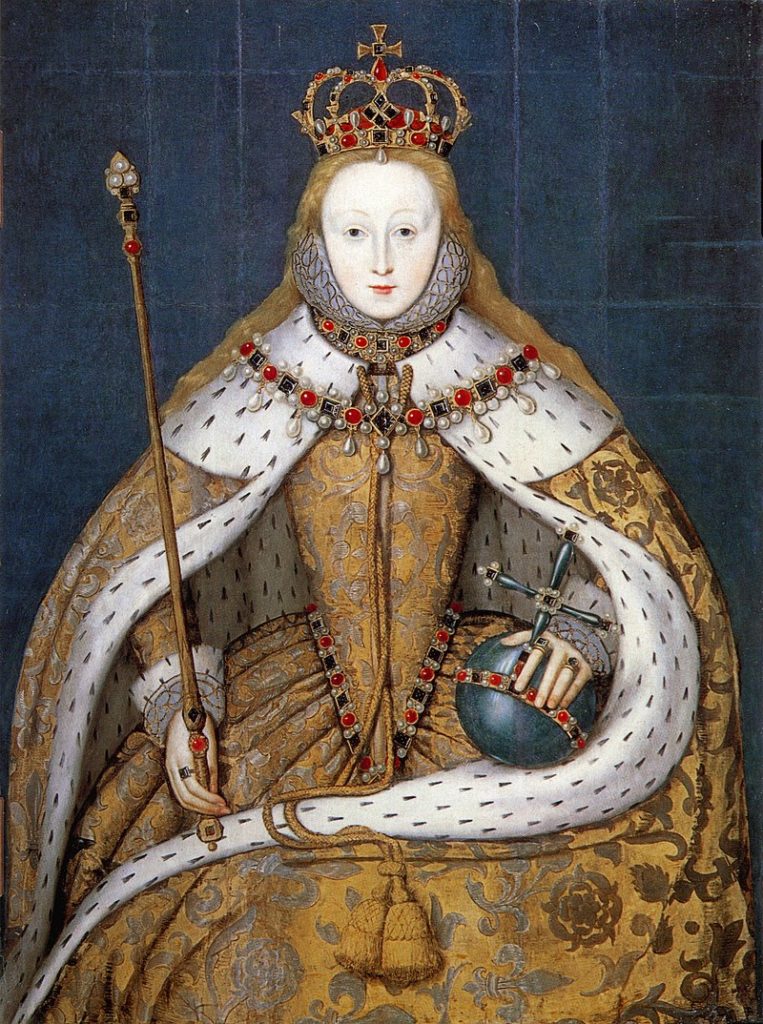
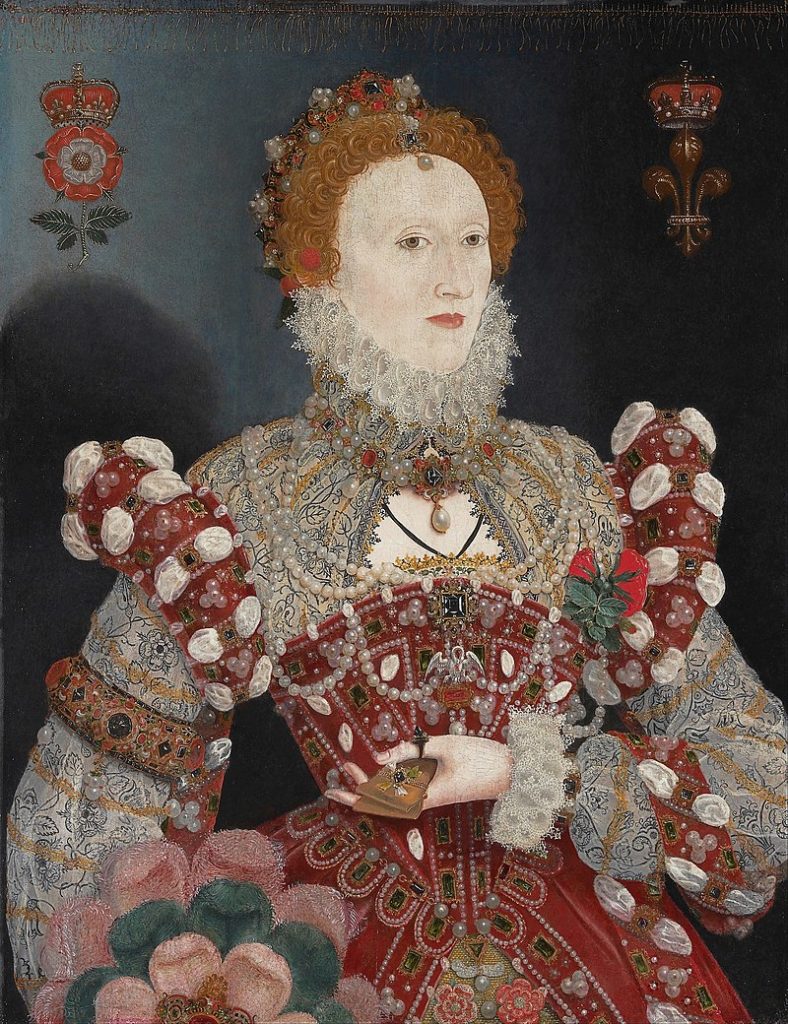
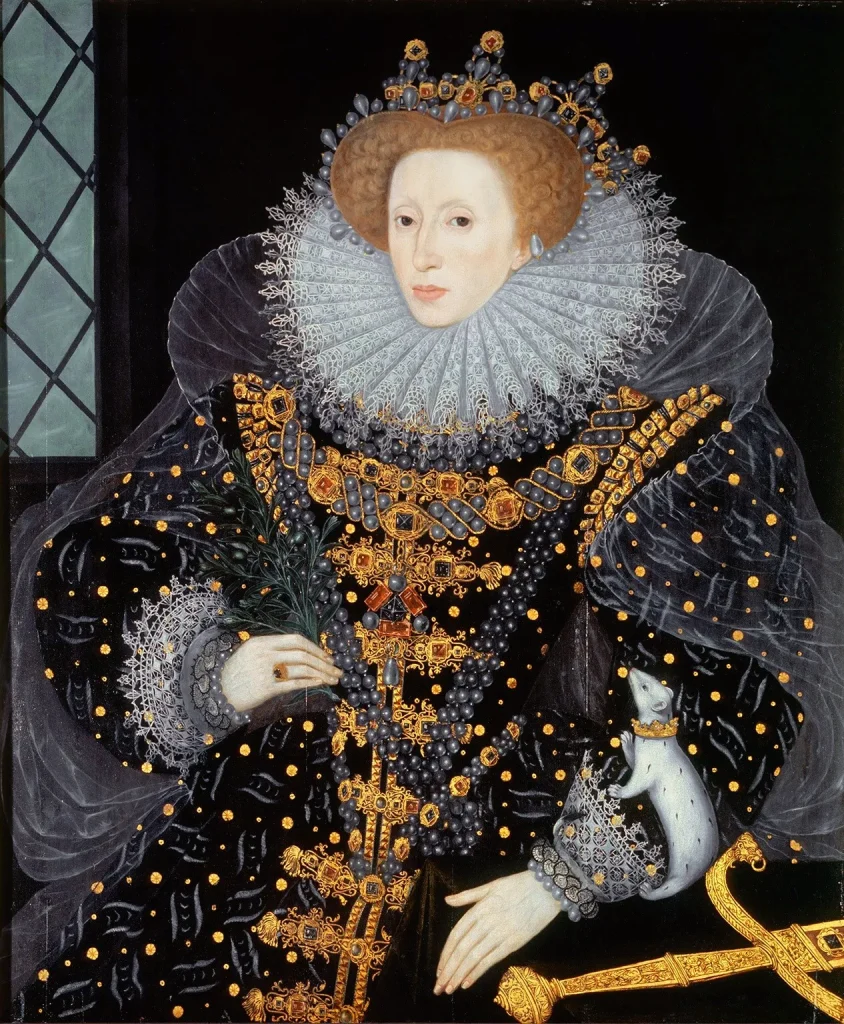
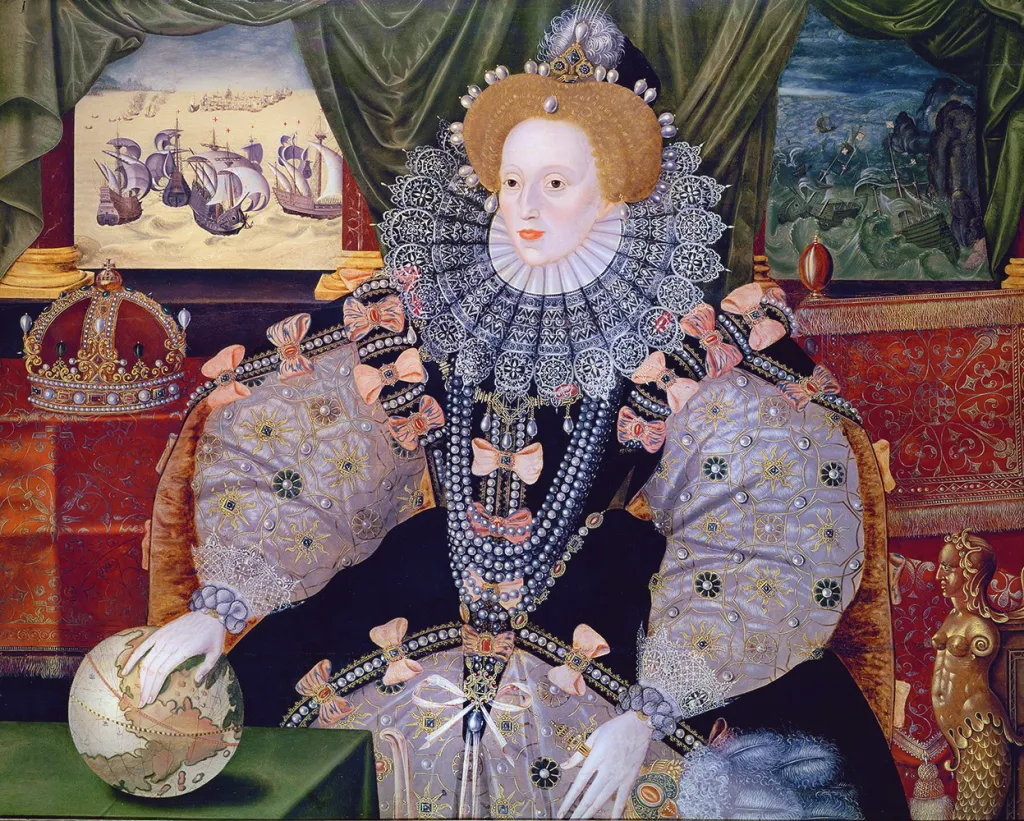
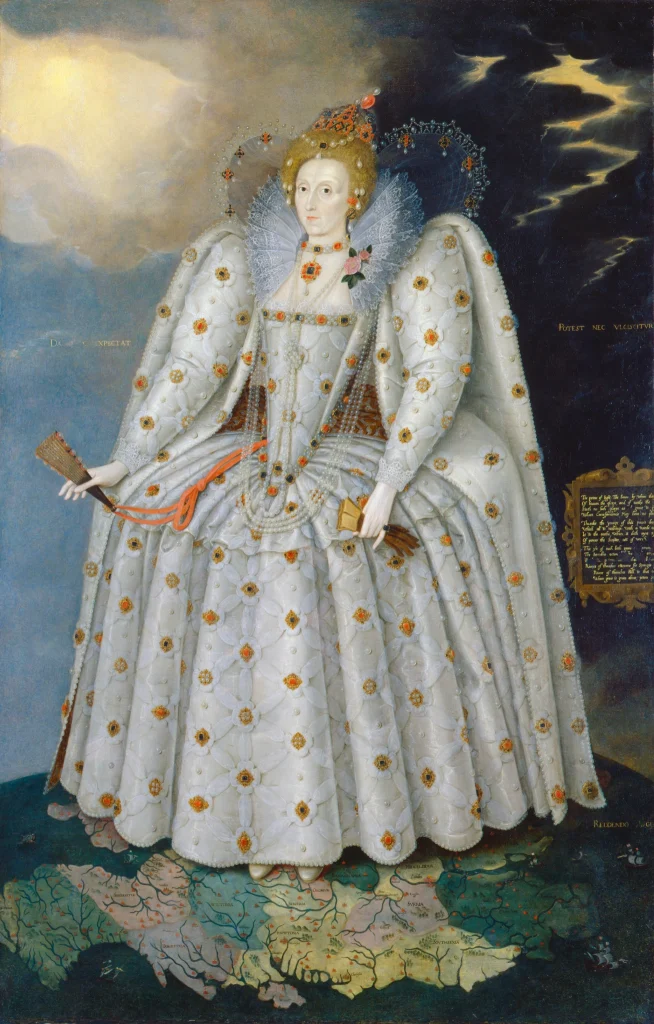
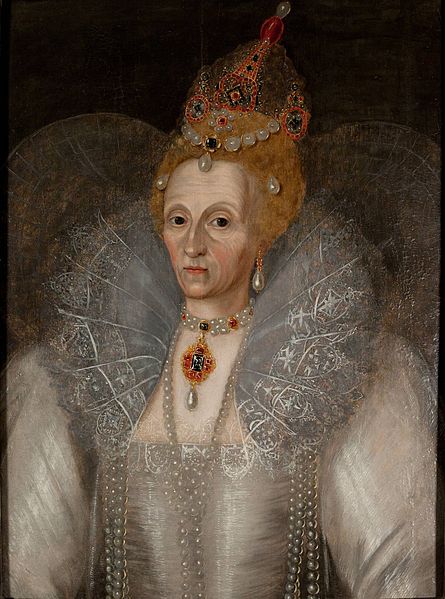
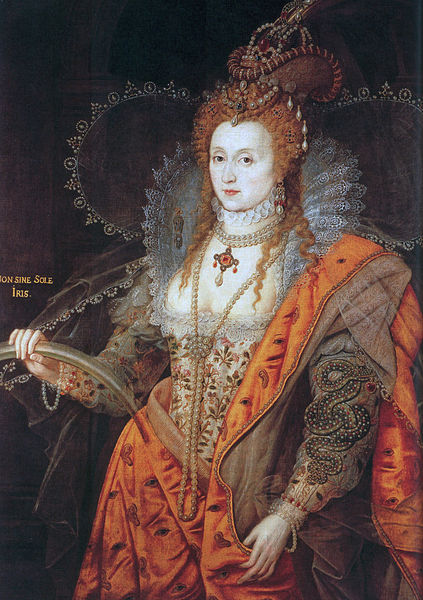
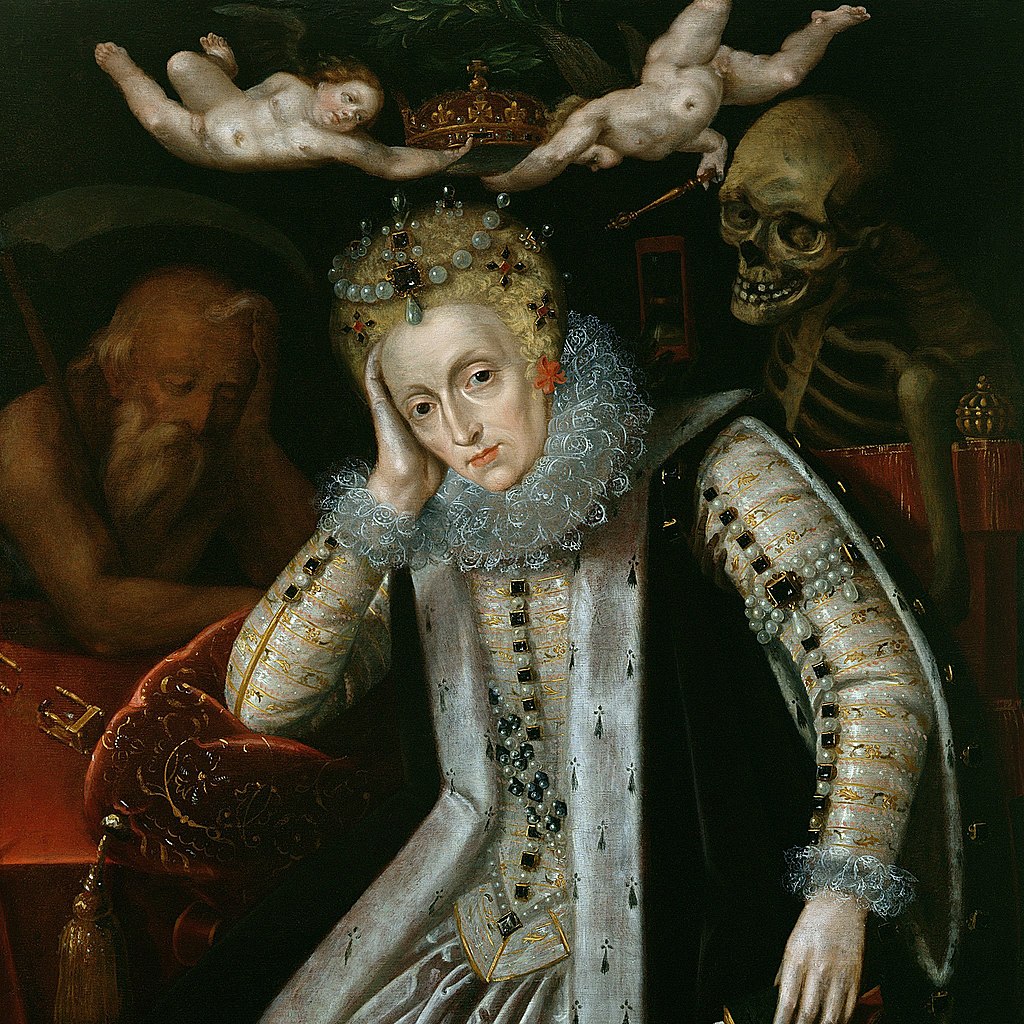
In 1600, Elizabeth had a considerable store of her jewelry appraised for sale, perhaps a preemptive move for the next-in-line as she would pass four years later. Many pieces were willed away by Elizabeth herself, while King James 1st selected some choice baubles for his wife and daughter as the new crown in charge. Several pieces from the collection were sold to goldsmiths or bid upon by admirers, only to vanish into antiquity. The sheer amount of pieces in her wardrobe means that much of it was either repurposed or worn until it could no longer stay sewn on. There are a few exceptions, such as the Bacton Altar Cloth, which was said to have come from a piece of Elizabeth’s wardrobe, potentially the one in the Rainbow Portrait. But the rarity of these artifacts only increases our sense of curiosity and fascination.